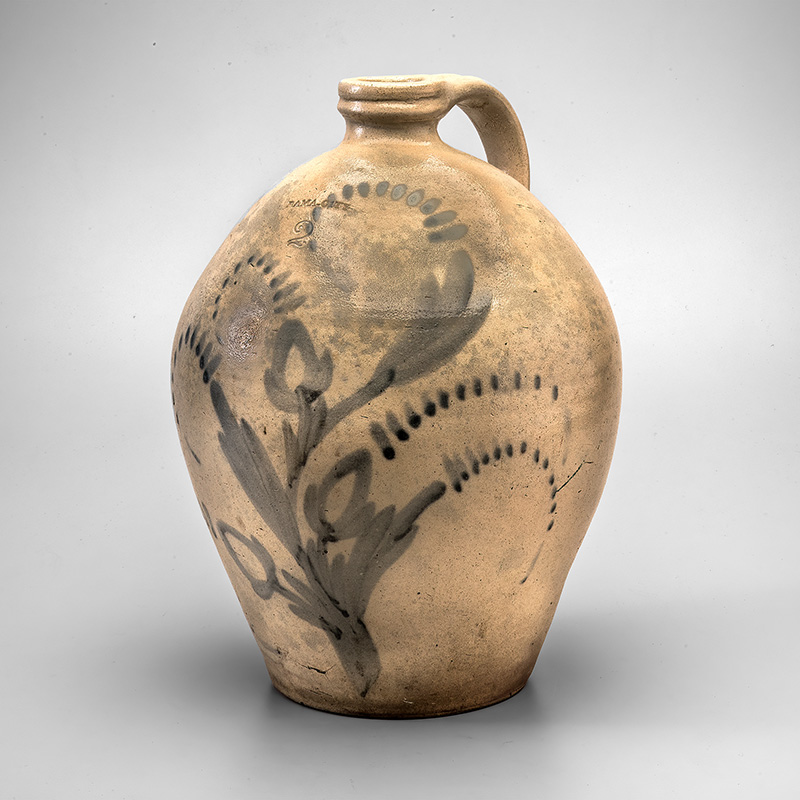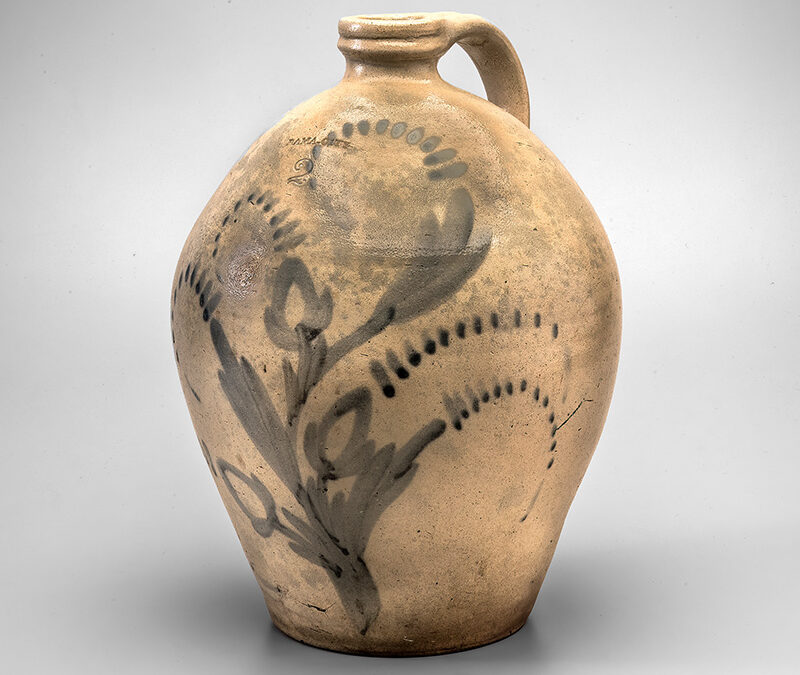
| Maker | Attributed to the shop of Augustin Marchal |
| Date of Creation | 1830–50 |
| Location | Baldwin County, Alabama |
| Materials | Salt-glazed stoneware |
| Institution | Museum of Early Southern Decorative Arts |
| Credit Line | MESDA purchase fund, in honor of Joey Brackner |
| Accession Number | 6094 |
| Photo Credit | Collection of the Museum of Early Southern Decorative Arts (MESDA) |
Augustin Marchal and his family immigrated to the eastern shore of the Mobile Bay from France and brought with them a distinctively European stoneware tradition. From the graceful ovoid silhouette to the high handle placement and use of salt glaze (as opposed to the alkaline glazes more prevalent in Alabama), it reflects wares they had known before their arrival. Yet stamped across the shoulders is incontrovertible proof that they were on, and using, foreign soil: “BAMA-CITY”. Naming mattered to the Marchals, or as they later became known, the Marshalls. Augustin was a second-generation ceramic artisan. His father, Antoine, was a pientre en fayance (painter on faience), a specialist in the delicate decoration of tin-glazed earthenware who worked in the Meuse department in northeastern France. The sprigs of flowers on Antoine’s wares are transformed into something entirely different on this jug from Augustin’s shop on Mobile Bay. Soft brushed cobalt leaves curl up the sides of the vessel, culminating in dotted arcs that echo the overall shape of the jug. It may perhaps be a representation of a cotton plant; the tulip-like shapes resemble the bolls that eventually mature into billowy puffs of fibers, and the dashed arches could arguably represent that later stage of development. Although not themselves enslavers, the Marchal family shop understood the critical place of cotton, the product of enslaved labor, in the culture in which they sought to prosper. It is just as much a statement of place and belonging as the boldly impressed “BAMA-CITY” stamp.

